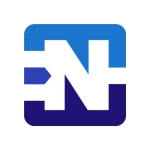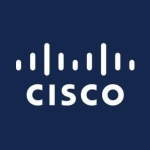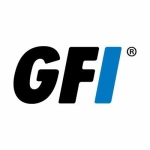What is our primary use case?
We employ Fortinet FortiGate-VM solely for testing purposes, similar to how we employ virtual machines in a virtual lab environment to evaluate solutions. When customers inquire about potential solutions, we typically construct and thoroughly test these solutions in our lab environment before providing confirmation. Once we've successfully conducted a proof of concept, we then extend an offer to the customer.
How has it helped my organization?
Both the hardware and virtual versions offer comprehensive capabilities required for perimeter network protection. Positioned at the network perimeter, they provide profiles that can be easily configured, including antivirus, DNS protection, web filtering, IPS, and application awareness for over five thousand applications. This allows for tailored configurations based on specific application usage within our network.
The scalability and flexibility of FortiGate VM have greatly benefited our organization. Its exceptional scalability allows us to adapt and expand according to our evolving needs.
Integrating FortiGate VM with our existing systems was straightforward, as I recall no difficulties during the process. I would rate it a solid ten out of ten for ease of integration.
The performance and availability of FortiGate-VM in our setup vary depending on the specific models chosen. We refer to data sheets and comparison tables to identify devices that meet our specific requirements. This involves considering factors such as performance metrics, encryption and decryption capabilities, and the number of secure connections supported. By comparing different models, we can select the one that best suits our needs.
The GUI of FortiGate is exceptional.
What is most valuable?
The features of FortiGate VM that we find most effective for network security include its universal operating system, which is the same across both hardware and virtual machine deployments. This consistency ensures that both real boxes and virtual machines run on identical images, accessible via both command line and graphical interfaces for convenience.
What needs improvement?
SD-WAN could be enhanced to provide a clear division between control and data planes, utilizing controllers to manage tasks within the network.
For how long have I used the solution?
We have been using it for more than three years.
What do I think about the stability of the solution?
I am satisfied with its stability. I would rate it ten out of ten.
What do I think about the scalability of the solution?
It provides outstanding scalability capabilities. I would rate it ten out of ten.
We serve a diverse range of customers, including large government organizations in Ukraine and small businesses. FortiGate is suitable for a variety of customer types, accommodating the needs of both large enterprises and smaller organizations.
How are customer service and support?
We haven't encountered any open trouble tickets in the past three years, so we don't have firsthand experience with how Fortinet handles cases.
How was the initial setup?
The initial setup is straightforward, earning a rating of ten out of ten for ease of use. Compared to other options, it stands out as exceptionally simple, largely due to the extensive documentation provided by Fortinet. Additionally, numerous YouTube tutorials are available online, making it easy to find solutions without necessarily having to consult the documentation.
What about the implementation team?
For deployment, FortiGate can be utilized in both on-premises and cloud environments, offering flexibility in its application. It can serve as a client-side perimeter device within a customer's network or function as a cloud-based service. Our organization predominantly offers cloud-based solutions, leveraging FortiGate installations at our Sentinel node facility. Here, we manage customer traffic by configuring it to pass through FortiGate, allowing us to provide next-generation firewall services to customers who lack their infrastructure. We tailor configurations to suit each customer's specific needs.
Alternatively, if a customer requires an on-premises solution, we may deploy a physical appliance at their site. In such cases, where the customer lacks the expertise to manage the firewall effectively, we offer a managed service option.
Deployment typically takes no more than a few hours, thanks to the straightforward installation process and the clarity of the documentation provided. Especially in simple configurations with uncomplicated topologies, deployment can be completed within minutes.
What's my experience with pricing, setup cost, and licensing?
The price falls somewhere in the middle; it's neither cheap nor expensive. I would rate it five out of ten.
When purchasing an appliance, it's essential to acquire the accompanying subscription. This is crucial because frequent updates to antivirus profiles and other features are necessary, often occurring daily. Operating the device effectively requires a subscription from Fortinet, which we consistently purchase.
What other advice do I have?
Fortinet FortiGate-VM is purpose-built as a next-generation firewall, excelling in its performance of this specific function. Its designated place in the network aligns perfectly with its capabilities, making it an ideal device for its intended purpose. Overall, I would rate it ten out of ten.
Disclosure: My company has a business relationship with this vendor other than being a customer. Partner















